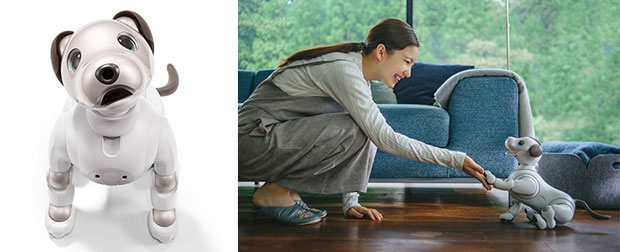Sony on Wednesday revived its robot dog, Aibo, which it put down, so to speak, in 2006.
The autonomous entertainment robot brings fun and joy to the entire family, Sony claimed.
Among other things, it can bond emotionally with people and give them love and affection, the company said.
Aibo also lets them experience the joy of nurturing and raising a companion, according to Sony.
Aibo has ultra-impact 1- and 2-axis actuators that let it move smoothly and naturally along 22 axes.
The eyes have OLEDs to allow for diverse, nuanced expressions, Sony said. Aibo also shows “emotions” through tail and ear movements.
Easy to Have Around
“Aibo’s nice in the sense that you remove all the burdens of ownership and gain the benefits,” observed Ray Wang, principal analyst at Constellation Research.
“You don’t have to take it out for a walk and deal with pooper scoopers; you don’t have to feed it,” he told TechNewsWorld. “The only thing you really have to do is charge its batteries.”
Cute or Creepy?
Aibo has an awareness of its environment, thanks to sensors that can detect and analyze sounds and images, and deep learning technology.
Its eyes are fisheye cameras that use simultaneous location and mapping (SLAM) technology. It also has a front camera.
Aibo has a speaker and four microphones.
It can detect words of praise and smiles. Capacitive touch sensors in the head, jaw and back enable it to respond to petting and scratching, too.
When given love and affection, it gives it back through AI technology that interfaces with Sony’s cloud.
However, “robots can only simulate the appearance of love,” noted Michael Jude, research manager at Stratecast/Frost & Sullivan.
“You wouldn’t expect an Aibo to throw itself in front of an oncoming car to save your life, while a real dog might,” he told TechNewsWorld.
Aibo can collect data from interactions with owners and collate it with data on the cloud about interactions between other Aibo devices and their owners to enhance its repository.
Aibo’s data periodically will be backed up in the cloud. The goal is to make it available to load onto a new Aibo in the future.
Aibo communicates over LTE or 802.11b/g/n WiFi. It comes with charging pins and a SIM card slot. The battery lasts about two hours, and recharging takes three hours.
Getting an Aibo of Your Own
Aibo will be available in January from the Sony store — but only in Japan. Its priced at about US$1,730 exclusive of tax.
Purchasers will have to pay for a basic three-year subscription plan as well, at $790 up front or $26 a month.
Sony also will release the My Aibo app in January.
Aibo’s Shortcomings
Aibo may be easy to care for, but having one may not be completely worry-free.
“There are tons of privacy issues in general related to connection back to the Internet,” remarked Constellation’s Wang.
Among them are “the subscription that’s required, photos stored in the cloud, the algorithms for learning, and other information in the cloud,” he said. “The vendors better have their act together.”
Even if robot pets like Aibo should become commonplace in the home, it’s not likely that other domestic robots would follow, said Jude. “You might trust Aibo to come when called, but that doesn’t necessarily extend to trusting a humanoid robot to handle a knife in the kitchen.”
So Long, Old Yeller
Robotic pets increasingly are viewed as an option to help improve quality of life for the aged and ailing.
In a recent study, nursing home residents showed the strongest reactions to visits from a person with a live dog or a Paro robot harp seal, researchers at Denmark’s Aarhus University found.
Hasbro offers Joy for All companion pets, a line of animatronic cats and dogs that many senior living facilities offer to their residents.
Though not as complex as Aibo, the much less expensive Hasbro pets are said to provide valuable benefits to patients, helping to soothe agitation and stem loneliness.























































